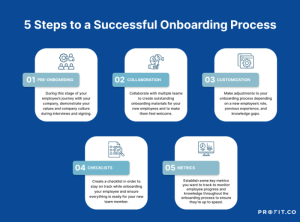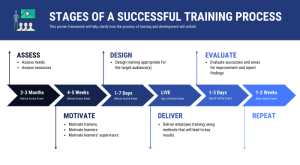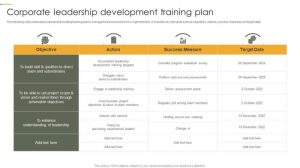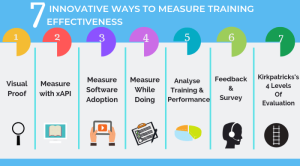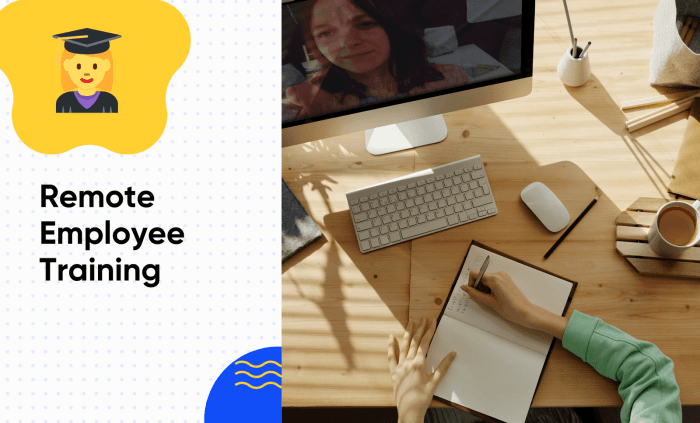
The rise of remote work has revolutionized how businesses operate, presenting both opportunities and challenges. One key area impacted is corporate training. Effectively delivering engaging and impactful training to a geographically dispersed workforce requires a strategic approach that leverages technology and considers the unique needs of remote employees. This guide explores the best practices, technologies, and strategies for successful remote corporate training, ensuring your investment in employee development yields maximum return.
We will delve into the specific hurdles faced when training remote teams, from overcoming communication barriers to utilizing technology effectively. We’ll compare synchronous and asynchronous learning methods, examine the role of innovative technologies like VR and AR, and explore how gamification can boost engagement. Finally, we’ll discuss measuring the success of your remote training programs and aligning them with overall corporate growth objectives.
Challenges of Remote Corporate Training
Delivering effective corporate training to a geographically dispersed workforce presents unique hurdles. The absence of face-to-face interaction necessitates innovative strategies to maintain engagement and ensure knowledge transfer. Furthermore, reliance on technology introduces potential disruptions and necessitates careful planning to mitigate their impact on learning outcomes.
Technology Limitations in Remote Training
Technology plays a crucial role in remote training, yet its limitations can significantly hinder effectiveness. Unreliable internet connectivity, incompatible software, and insufficient technical support can disrupt training sessions, frustrate learners, and ultimately compromise the quality of instruction. For instance, a slow internet connection can lead to lagging video streams and audio dropouts, making it difficult for participants to follow along.
Similarly, incompatibility between different operating systems or software versions can prevent learners from accessing training materials or participating in interactive exercises. The lack of readily available technical support can further exacerbate these issues, leaving learners feeling isolated and unsupported.
Overcoming Communication Barriers in Virtual Training
Effective communication is paramount in any training setting, but it becomes even more challenging in a virtual environment. The absence of nonverbal cues and the potential for technical glitches can create communication barriers that hinder learning. Strategies to overcome these barriers include using a variety of communication methods (e.g., video conferencing, instant messaging, discussion forums), actively encouraging participant interaction through polls, quizzes, and breakout sessions, and providing clear and concise instructions.
Regular check-ins and opportunities for feedback also help to address individual learner needs and concerns.
Examples of Remote Training Challenges and Solutions
The following table illustrates common challenges encountered in remote corporate training, along with potential solutions and their anticipated results:
| Challenge | Impact | Solution | Result |
|---|---|---|---|
| Uneven internet connectivity among participants | Interrupted video and audio streams, difficulty accessing training materials, reduced engagement. | Provide training materials in multiple formats (e.g., downloadable PDFs, offline videos), schedule training sessions during times of optimal internet connectivity, offer technical support during sessions. | Improved access to materials, increased engagement, smoother training delivery. |
| Lack of engagement and interaction among participants | Passive learning, reduced knowledge retention, decreased satisfaction. | Incorporate interactive elements such as polls, quizzes, breakout sessions, and group projects. Encourage active participation through questions and discussions. | Increased active learning, improved knowledge retention, higher participant satisfaction. |
| Difficulties in providing timely feedback and support | Delayed clarification of concepts, frustration among learners, reduced learning outcomes. | Utilize online communication tools such as instant messaging and discussion forums for quick responses. Schedule regular check-in sessions for individual and group support. | Improved learner understanding, increased learner confidence, enhanced learning outcomes. |
| Technical difficulties with software or platforms | Disrupted training sessions, learner frustration, wasted time and resources. | Thoroughly test all technology and platforms before the training. Provide clear instructions and technical support during the sessions. Offer alternative methods for accessing materials. | Smoother training delivery, reduced learner frustration, increased efficiency. |
Effective Training Methods for Remote Employees
Successful remote corporate training hinges on selecting and implementing the right methods. This requires careful consideration of employee preferences, learning styles, and the specific training objectives. Choosing the most effective approach maximizes knowledge transfer and ensures a positive learning experience, ultimately contributing to improved employee performance and organizational success.
Synchronous versus Asynchronous Training Methods
Synchronous and asynchronous training methods each offer distinct advantages and disadvantages for remote teams. Synchronous training, such as live webinars or virtual classroom sessions, provides real-time interaction and immediate feedback. This fosters a sense of community and allows for immediate clarification of doubts. However, it requires participants to be available at a specific time, potentially causing scheduling conflicts and limiting accessibility.
Asynchronous training, such as pre-recorded videos, online modules, or downloadable materials, offers flexibility and convenience. Employees can access the training at their own pace and schedule, accommodating diverse time zones and individual learning styles. The downside is the lack of immediate interaction and the potential for reduced engagement if not carefully designed. The optimal approach often involves a blended learning model, combining both synchronous and asynchronous methods to leverage the strengths of each.
Best Practices for Designing Engaging and Interactive Online Training Modules
Creating engaging online training requires a multi-faceted approach. Firstly, modules should be concise and focused, avoiding information overload. Chunking information into smaller, digestible units improves comprehension and retention. Secondly, incorporating interactive elements, such as quizzes, polls, simulations, and branching scenarios, actively involves learners and enhances knowledge application. Thirdly, utilizing varied media formats, including videos, animations, infographics, and interactive exercises, caters to different learning preferences and maintains learner interest.
Finally, incorporating real-world case studies and examples relevant to the employees’ roles enhances the practical application of the training material. Regular feedback mechanisms, such as progress tracking and post-training assessments, allow for monitoring comprehension and identifying areas needing further clarification.
Virtual Reality (VR) and Augmented Reality (AR) in Remote Corporate Training
The use of VR and AR technologies offers innovative approaches to remote training. Both technologies offer immersive learning experiences that can significantly enhance engagement and knowledge retention.
- Virtual Reality (VR)
- Advantages: Provides highly immersive and engaging training environments, allowing for realistic simulations and hands-on practice in a safe and controlled setting. Particularly beneficial for training involving complex procedures or hazardous environments.
- Disadvantages: Requires specialized equipment (VR headsets), which can be expensive and may not be accessible to all employees. Can cause motion sickness or discomfort in some users. Development and implementation can be complex and time-consuming.
- Augmented Reality (AR)
- Advantages: Overlays digital information onto the real world, allowing for interactive training experiences in real-time. Can be used to guide employees through tasks, provide real-time feedback, and enhance practical skills development. Requires less specialized equipment than VR, often utilizing smartphones or tablets.
- Disadvantages: The level of immersion is generally lower than VR. The effectiveness depends on the quality of the AR application and the availability of appropriate devices. Development may still be relatively complex and costly compared to traditional methods.
Gamification in Remote Training Programs
Gamification, the application of game-design elements in non-game contexts, can significantly boost engagement and knowledge retention in remote training. By incorporating elements such as points, badges, leaderboards, challenges, and rewards, training programs can become more interactive and motivating. For example, employees can earn points for completing modules, answering quiz questions correctly, or participating in discussions. Leaderboards can foster healthy competition, while badges can provide recognition for achievements.
This approach taps into the inherent human desire for achievement, recognition, and competition, making the learning process more enjoyable and effective. A well-designed gamified training program can transform a potentially tedious task into an engaging and rewarding experience, leading to improved learning outcomes.
Technology and Tools for Remote Corporate Training

Successful remote corporate training hinges on leveraging the right technology and tools. Selecting appropriate software and hardware is crucial for effective delivery, ensuring a seamless and engaging learning experience for all participants, regardless of their location. The choice of tools will depend on the specific training objectives, budget, and the technical proficiency of both trainers and trainees.
Essential Software and Hardware for Remote Training
The foundation of successful remote training lies in reliable technology. Essential software includes a robust Learning Management System (LMS), video conferencing software, and potentially screen sharing and recording tools. Hardware needs are equally important and include reliable internet connectivity, high-quality microphones and webcams for clear audio and video, and comfortable headsets to minimize distractions. For trainers, a powerful computer capable of handling multiple applications simultaneously is beneficial.
Video Conferencing Platforms for Training
Several video conferencing platforms cater to corporate training needs, each with its own strengths and weaknesses. Zoom, for example, offers ease of use and robust features like breakout rooms and screen sharing, ideal for interactive sessions. However, its free tier might have limitations on meeting duration. Microsoft Teams, integrated within the Microsoft 365 suite, provides seamless collaboration but may require familiarity with the broader Microsoft ecosystem.
Google Meet, known for its simplicity and integration with Google Workspace, is a strong contender for straightforward training sessions. The choice depends on existing infrastructure, budget, and desired features. For example, a company already heavily invested in Microsoft products might find Teams more efficient, while a smaller organization might prefer the cost-effectiveness of Google Meet.
Sample Training Program Schedule Incorporating Technological Tools
This sample schedule illustrates how various technologies can be integrated into a remote training program.
| Time | Activity | Technology Used |
|---|---|---|
| 9:00 – 9:15 AM | Welcome and Introductions | Zoom Video Conferencing |
| 9:15 – 10:15 AM | Module 1: Presentation and Discussion | Zoom Video Conferencing, Screen Sharing |
| 10:15 – 10:30 AM | Break | N/A |
| 10:30 – 11:30 AM | Module 2: Hands-on Activity and Group Work | Zoom Breakout Rooms, Shared Google Doc |
| 11:30 AM – 12:00 PM | Q&A and Wrap-up | Zoom Video Conferencing |
Step-by-Step Guide on Using a Specific Learning Management System (LMS)
This guide Artikels using a hypothetical LMS called “LearnPro”. Note that specific steps will vary depending on the chosen LMS.
- Account Creation: Access the LearnPro website and click “Register.” Complete the required fields, including your email address and a password. An activation email will be sent to your registered email address.
- Course Enrollment: Once logged in, navigate to the “Courses” tab. Find the relevant course and click “Enroll.” You will receive a confirmation email once enrolled.
- Course Navigation: The course dashboard displays all course materials, including modules, assignments, and quizzes. Click on the module titles to access the content.
- Completing Assignments: Submit assignments through the designated submission links within each module. LearnPro typically provides deadlines and feedback mechanisms.
- Quizzes and Assessments: Access and complete quizzes through the designated links. LearnPro usually provides immediate feedback on your performance.
- Communication: Utilize the integrated communication tools, such as forums or direct messaging, to interact with instructors and fellow participants.
Measuring the Effectiveness of Remote Corporate Training

Measuring the success of remote corporate training is crucial for optimizing learning outcomes and maximizing return on investment. Effective evaluation goes beyond simply assessing participant satisfaction; it requires a multifaceted approach that considers various factors impacting employee performance and overall business goals. By employing a range of assessment methods and tracking key performance indicators, organizations can gain valuable insights into the effectiveness of their training initiatives and make data-driven improvements.
Methods for Assessing the Impact of Remote Training
Several methods can be used to assess how well remote training programs improve employee performance. These methods should be chosen based on the specific learning objectives and the nature of the training itself. A combination of methods often provides the most comprehensive evaluation. For instance, pre- and post-training assessments can measure knowledge gained, while on-the-job observations can assess the application of learned skills.
Analyzing key performance indicators (KPIs) provides a quantifiable measure of training effectiveness related to business outcomes.
Key Performance Indicators (KPIs) for Remote Training Success
Tracking specific KPIs provides quantifiable evidence of a training program’s impact. These KPIs should align directly with the training’s objectives. Examples include: increased productivity (measured by units produced or tasks completed), improved customer satisfaction scores (gathered through surveys or feedback forms), reduced error rates (tracking mistakes made during tasks), faster task completion times (measuring efficiency), and improved employee engagement scores (obtained through employee surveys).
For example, a sales training program might track an increase in average deal size or conversion rates as KPIs. A customer service training program could focus on decreased call handling times and improved customer satisfaction ratings.
Gathering Feedback from Remote Employees
Collecting feedback from remote employees is essential for understanding their training experience and identifying areas for improvement. This feedback should be gathered through multiple channels to ensure a comprehensive perspective.
- Post-Training Surveys: These surveys can assess satisfaction with the training content, delivery method, and overall experience. Questions should cover aspects like clarity of the material, engagement level, and relevance to the employee’s role. A Likert scale (strongly agree to strongly disagree) is often used for quantifiable data.
- Focus Groups: Virtual focus groups provide an opportunity for in-depth discussion and feedback. These sessions allow for open-ended questions and a more nuanced understanding of the employee experience.
- Individual Interviews: One-on-one interviews can provide personalized insights and address specific concerns raised by individual employees.
- Performance Reviews: Incorporating training-related questions into performance reviews provides a direct link between training and on-the-job performance.
- Informal Feedback Channels: Establishing open communication channels, such as online forums or chat groups, allows employees to provide feedback throughout the training process.
Strategies for Improving Remote Training Programs
Analyzing the data collected from various feedback methods is crucial for improving remote training programs. Identifying trends and patterns in the feedback will highlight areas needing attention. For instance, if many employees report difficulty understanding certain concepts, the training materials may need revision for clarity. If engagement is low, the delivery method might require adjustments. Data analysis can inform decisions about revising training content, updating technology, or adjusting the training schedule to better suit employee needs.
Continuous improvement is key to ensuring the effectiveness of remote corporate training.
Corporate Growth and Corporate Training
Effective corporate training is not merely a cost; it’s a strategic investment directly impacting a company’s growth trajectory. A skilled and knowledgeable workforce is the engine of innovation, productivity, and ultimately, profitability. By fostering a culture of continuous learning and development, organizations can unlock their employees’ full potential, leading to a competitive advantage in the marketplace.Investing in employee development translates directly into improved productivity and profitability.
Well-trained employees are more efficient, make fewer errors, and are better equipped to handle complex tasks. This enhanced performance leads to increased output, reduced operational costs, and ultimately, higher profit margins. Furthermore, continuous learning keeps employees engaged and motivated, reducing turnover and the associated recruitment and training costs.
Examples of Successful Training and Growth
The following table showcases companies that have successfully leveraged training to achieve significant growth. These examples highlight the diverse approaches and impactful results that can be achieved through strategic investment in employee development.
| Company | Training Strategy | Results | Impact on Growth |
|---|---|---|---|
| Extensive internal training programs covering technical skills, leadership development, and soft skills, coupled with mentorship programs and online learning platforms. | Increased employee retention, improved employee satisfaction, and a boost in innovation and product development. | Sustained high growth rates, market leadership, and a strong employer brand. | |
| Microsoft | Focus on technical skills training, particularly in cloud computing and AI, along with leadership development programs for managers and executives. | Enhanced employee proficiency in cutting-edge technologies, leading to improved product development and market competitiveness. | Significant expansion into new markets and revenue streams driven by technological innovation. |
| Salesforce | Robust sales training programs emphasizing customer relationship management (CRM) and sales methodologies, combined with ongoing professional development opportunities. | Increased sales productivity, improved customer satisfaction, and a stronger sales team overall. | Rapid revenue growth and market dominance in the CRM software industry. |
Strategic Plan Linking Corporate Training to Growth Objectives
A successful strategic plan aligns corporate training initiatives directly with specific, measurable, achievable, relevant, and time-bound (SMART) corporate growth objectives. This ensures that training investments contribute directly to the achievement of overall business goals. The plan should encompass the following key elements:
1. Define Growth Objectives
Clearly articulate the company’s short-term and long-term growth targets, including market share expansion, revenue growth, and new product launches.
2. Identify Skill Gaps
Conduct a thorough skills gap analysis to determine the skills and knowledge required to achieve the defined growth objectives. This may involve employee surveys, performance reviews, and interviews with managers.
3. Develop Training Programs
Design and implement training programs that address the identified skill gaps. These programs should be tailored to the specific needs of different employee groups and utilize appropriate training methods.
4. Measure and Evaluate
Establish metrics to track the effectiveness of the training programs and their impact on employee performance and business outcomes. Regularly review and adjust the training strategy based on the results.
5. Continuous Improvement
Foster a culture of continuous learning and development by providing ongoing training opportunities and encouraging employees to actively seek out new knowledge and skills.
Successfully implementing corporate training for remote employees requires a multifaceted strategy that blends effective training methodologies, appropriate technology, and robust assessment methods. By addressing the unique challenges of distance learning and leveraging the power of innovative tools, organizations can foster a culture of continuous learning, enhance employee skills, and drive significant corporate growth. The key lies in creating engaging, accessible, and measurable training programs that empower remote employees to thrive and contribute their best to the company’s success.
Popular Questions
What are the best platforms for delivering remote training?
Popular choices include Zoom, Microsoft Teams, Google Meet for synchronous training and platforms like Moodle, Coursera, and LinkedIn Learning for asynchronous learning. The best platform will depend on your specific needs and budget.
How can I ensure employee engagement in remote training?
Incorporate interactive elements, gamification, and regular check-ins. Use diverse learning formats (videos, quizzes, discussions) and provide opportunities for collaboration and feedback.
How do I measure the ROI of remote training programs?
Track key performance indicators (KPIs) like employee performance improvements, increased productivity, reduced errors, and improved customer satisfaction. Conduct pre- and post-training assessments to gauge knowledge gained.
What if employees lack the necessary technology for remote training?
Provide necessary equipment or offer training on using readily available tools. Ensure training materials are accessible across various devices and internet speeds.
